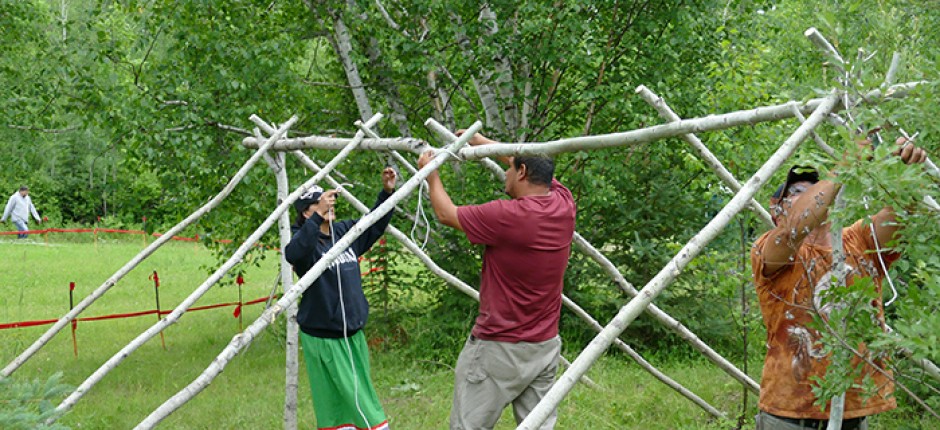By Lenard Monkman
- About
- J-Talks
- CJF Awards
- Award Categories
- CJF Hinton Award for Excellence in AI Safety Reporting
- CJF Award for Climate Solutions Reporting
- Lifetime Achievement Award
- CJF Dr. Eric Jackman Award for Excellence in Journalism
- CJF Tribute
- CJF Edward Burtynsky Award for Climate Photojournalism
- The Landsberg Award
- CJF Special Citation 2025: The Toronto Star
- 2026
- 2025
- 2024
- 2023
- 2022
- 2021
- 2020
- 2019
- Award Categories
- Fellowships
- CJF Indigenous Health Journalism Fellowship
- CJF Bursary for BIPOC Student Journalists
- CJF Black Journalism Fellowships
- CJF-CBC Indigenous Journalism Fellowship
- Jury
- CJF-CBC Indigenous Journalism Recipients
- 2024 CJF-CBC Indigenous Journalism Fellows
- 2023 CJF-CBC Indigenous Journalism Fellows
- 2022 CJF-CBC Indigenous Journalism Fellows
- 2021 CJF-CBC Indigenous Journalism Fellows
- 2020 CJF-CBC Indigenous Journalism Fellows
- 2019 CJF-CBC Indigenous Journalism Fellows
- 2018 CJF-CBC Indigenous Journalism Fellows
- 2017 CJF-CBC Indigenous Journalism Fellows
- 2016 CJF-CBC Indigenous Journalism Fellows
- 2015 CJF-CBC Indigenous Journalism Fellows
- 2014 CJF-CBC Indigenous Journalism Fellows
- Tom Hanson Photojournalism
- Research and Education
- CJF NextGen Creator-Journalists Training Program
- Research
- Digital deception now a ‘daily reality’ for nearly half of Canadians, new survey reveals
- Canadians want transparent media AI policy, poll says
- CJF & Maru Public Opinion: Media Literacy in the Age of AI
- Poisoned Well: Industry Roundtable on Journalists and Online Hate
- Canadians on Misinformation and Coronavirus
- Media Literacy
- The Shattered Mirror
- Supporters
- DONATE NOW

- About
- J-Talks
- CJF Awards
- Award Categories
- CJF Hinton Award for Excellence in AI Safety Reporting
- CJF Award for Climate Solutions Reporting
- Lifetime Achievement Award
- CJF Dr. Eric Jackman Award for Excellence in Journalism
- CJF Tribute
- CJF Edward Burtynsky Award for Climate Photojournalism
- The Landsberg Award
- CJF Special Citation 2025: The Toronto Star
- 2026
- 2025
- 2024
- 2023
- 2022
- 2021
- 2020
- 2019
- Award Categories
- Fellowships
- CJF Indigenous Health Journalism Fellowship
- CJF Bursary for BIPOC Student Journalists
- CJF Black Journalism Fellowships
- CJF-CBC Indigenous Journalism Fellowship
- Jury
- CJF-CBC Indigenous Journalism Recipients
- 2024 CJF-CBC Indigenous Journalism Fellows
- 2023 CJF-CBC Indigenous Journalism Fellows
- 2022 CJF-CBC Indigenous Journalism Fellows
- 2021 CJF-CBC Indigenous Journalism Fellows
- 2020 CJF-CBC Indigenous Journalism Fellows
- 2019 CJF-CBC Indigenous Journalism Fellows
- 2018 CJF-CBC Indigenous Journalism Fellows
- 2017 CJF-CBC Indigenous Journalism Fellows
- 2016 CJF-CBC Indigenous Journalism Fellows
- 2015 CJF-CBC Indigenous Journalism Fellows
- 2014 CJF-CBC Indigenous Journalism Fellows
- Tom Hanson Photojournalism
- Research and Education
- CJF NextGen Creator-Journalists Training Program
- Research
- Digital deception now a ‘daily reality’ for nearly half of Canadians, new survey reveals
- Canadians want transparent media AI policy, poll says
- CJF & Maru Public Opinion: Media Literacy in the Age of AI
- Poisoned Well: Industry Roundtable on Journalists and Online Hate
- Canadians on Misinformation and Coronavirus
- Media Literacy
- The Shattered Mirror
- Supporters
- DONATE NOW

2017 CJF-CBC Indigenous Journalism Fellow

The fellowship experience was something that I will definitely be able to carry with me for a long time. I knew that there was an event, the Great Water Gathering, which was being hosted by Indigenous people that I admire and respect – Christi Belcourt and Isaac Murdoch. I had seen pictures of the gathering that they held the previous year and wished I could have went, so I was delighted to hear they were hosting this year’s gathering so close to home. I had called Isaac to confirm that I would be able to cover the gathering, and they happily agreed. They agreed because they want more people to go back to ceremonies and they want to raise more awareness on water issues in Canada.
I went into the fellowship knowing which direction I would take on the stories. I knew that I wanted to make a connection on the relationship that Indigenous peoples have with the water, and connect it to the indigenous activism that we see in Canada today. I was a bit stressed out before the gathering just trying to gather everything that I would need to go camping for the weekend. I decided to take my son and daughter for the weekend and I was glad that I did.
We got to the gathering in the Whiteshell region on Friday evening, set up our camp and spent the evening walking around talking to the people at the camp. Quickly, I found out that many of the people were not from Manitoba, but many had travelled to the Whiteshell from provinces that ranged from British Columbia to Ontario.
The first night that we were there, we were able to visit a huge rock that was about 4 stories off the ground, one of the most beautiful views that I have seen in Manitoba. I was told that the site that we were camping at once was the place where many Anishinaabe people from the interlake would meet up to harvest wild rice, and socialize during summers.
The second day was when the ceremonies started. I got caught up with being more of a participant, and even though I had permission to record and photograph the ceremonies, it didn’t sit well with many of the elders taking part in the ceremonies.
In the afternoon on Saturday, everyone that was at the camp took part in watching a local elder get a traditional poke tattoo–on her face. It was quite an emotional moment for everyone who was watching because you could tell how how much the tattoo meant to the elder.
Also that afternoon, I was personally invited to sit in the language camp with a group of Anishinaabe elders and language speakers. They sat around and told stories and it was something that I haven’t had the opportunity to do for many years.
The Sunday was spent walking around and visiting various people throughout the camp. But it was the day that I gathered all of my tape that I would use for the written document and audio piece. I had been trying to get audio interviews all weekend without much success. That Sunday afternoon, I came across a group of women and girls. The elders were teaching the young girls how to make birch bark baskets. I pulled out the audio equipment and asked one of them to “tell me a birchbark story.”
As soon as I asked the question all of the elders stayed and talked to me for at least an hour. We talked about water, Indigenous women and their spiritual relationship to water, matriarchy, traditional birthing practices and many more subjects. It was beautiful to be able to tap into such a wealth of knowledge sitting around one table. Anishinaabe people can come across as shy at times, but to have the opportunity to learn so much that afternoon was easily the highlight of my fellowship.
From the training at CBC Indigenous/Manitoba, to the awesome experience of being able to see many of the legends of journalism at the CJF awards, the fellowship has left me with memories that I will carry with me.
I would to like to thank the Canadian Journalism Foundation for being able to provide me an opportunity to cover Indigenous news in the field. It has truly been a great experience for me.
Check out Monkman’s pieces for CBC News:
– ‘Pray for the waters’: Great Water Gathering brings Indigenous, non-Indigenous protectors together (online piece)
– ‘Pray for the waters’: Great Water Gathering brings Indigenous, non-Indigenous protectors together (radio piece)
Julian Brave Noisecat was the other 2017 fellow. Read about his experience.
Read about the CJF-CBC Indigenous Journalism Fellowships, opening in January 2018.
THE CANADIAN JOURNALISM FOUNDATION THANKS THE GENEROUS SUPPORTERS OF THIS AWARD:


Rosemary Speirs, CJF Honorary Governor
Isabel Bassett, former chair and CEO, TVO
 |
|
| info@cjf-fjc.ca | |
| 77 Bloor St. West, Suite 600, Toronto, ON M5S 1M2 | |
| (437) 783-5826 | |
| Charitable Registration No. 132489212RR0001 | |
ABOUT US
Founded in 1990, The Canadian Journalism Foundation promotes, celebrates and facilitates excellence in journalism. The foundation runs a prestigious awards and fellowships program featuring an industry gala where news leaders…
Ⓒ2025 The Canadian Journalism Foundation.
All Rights Reserved.

